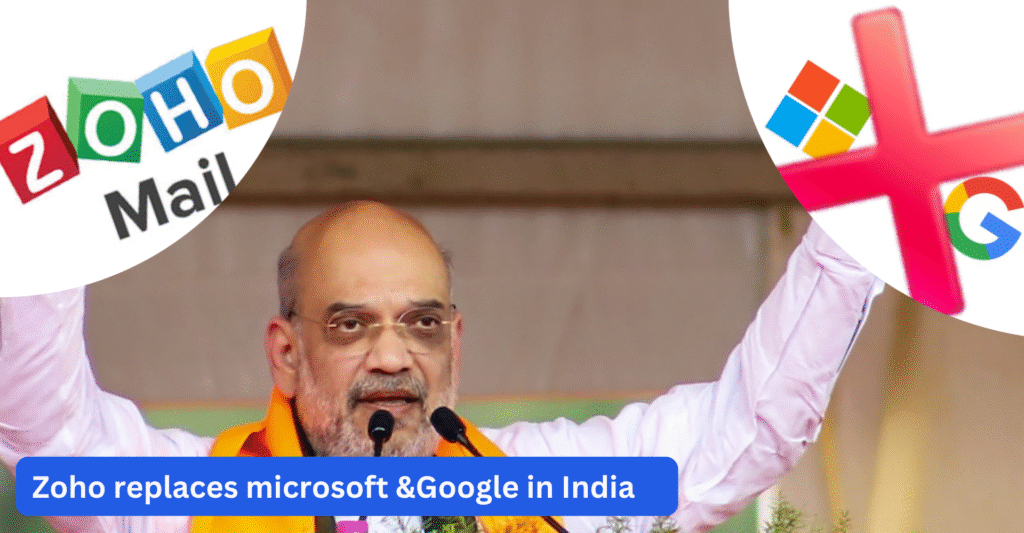
Quick Highlights
- Amit Shah announced a Trump-style switch from Gmail to Zoho Mail, signaling “Tech Nationalism” and an “India First” approach.
- The government is shifting to indigenous platforms like Zoho Mail, Zoho Workplace, and Arattai Messenger.
- Reduces dependence and weakens foreign dominance.
- Position India as a rising tech power.
Amit Shah’s bold and controversial switch from Gmail to India’s homegrown Zoho Mail , announced in a Trump-style tweet marks more than a personal choice. It’s a powerful display of “Tech Nationalism” and “India First”, signaling India’s strategic push to break free from dependence on U.S. tech giants.
What is Coup?
The “Digital Coup” in India means a government-backed plan to build digital independence:
- Planned Shift: The government is moving its digital systems away from foreign tech companies.
- Main Focus: Official emails are shifting to Zoho Mail, and office work tools are moving to Zoho Workplace.
- Support for Indian Apps: Other homegrown platforms like Arattai Messenger are also being promoted.
- Main Goal: To make India digitally self-reliant, protect national data, and reduce dependence on global tech giants.
Who’s leading the Charge?
The initiative is being led by Home Minister Amit Shah and senior government officials, who are driving India’s “Swadeshi Tech” movement to promote and adopt homegrown digital platforms.
When is it Happening?
The migration is an ongoing, phased process across government ministries. Home Minister Amit Shah’s public announcement, following technical audits by CERT-IN, underscores the initiative’s high priority.
Where is the Impact?
- Primarily impacts India’s large digital market.
- Creates strategic opportunities for domestic tech companies.
- Challenges the dominance of foreign tech giants.
- Encourages growth and innovation within the Indian tech ecosystem.
Why is U.S. Tech Being Replaced?
India is moving away from U.S. technology because of concerns over America’s control over its digital systems. Relying too much on U.S. companies could put India’s data at risk from spying, sudden service blocks, or political pressure. This dependence is seen as a threat to India’s security and digital independence.
By switching to Indian platforms like Zoho Mail and Zoho Workplace, India is taking charge of its own technology. The goal is to protect important data, reduce reliance on foreign tech giants, and boost local innovation, showing that India will no longer let other countries control its digital future.
How Does This Affect Global Tech?
India’s move to adopt homegrown technology sends a strong warning to U.S. tech giants, forcing them to rethink their dominance and strategies in the country. By creating a protected and growing market for domestic firms, India is weakening the influence of American tech companies, empowering local innovation, and challenging the global supremacy of Silicon Valley in one of the world’s largest digital markets.
Conclusion: From dependence to dominance
India’s push for digital sovereignty prioritizes self-reliance over global integration and challenges the dominance of U.S. tech giants like Google and Microsoft. Whether a step toward self-reliance or the start of digital protectionism, it positions India to become a global technology leader in the future.
Stay connected with Unwires.com for more geopolitics, bollywood stories, guides, and inspiration.After all, every great journey begins with a spark — and Unwires is that spark. ⚡


